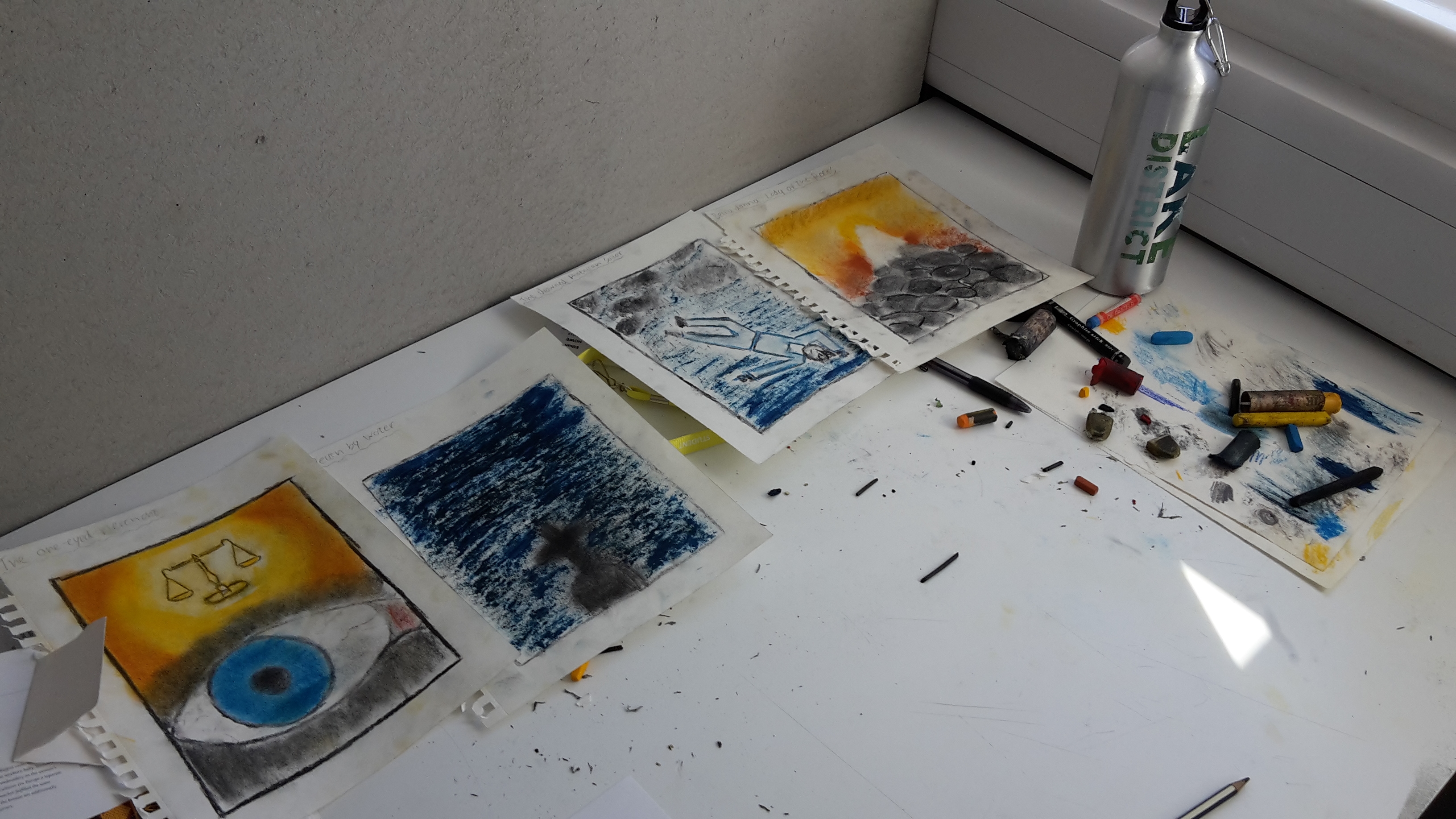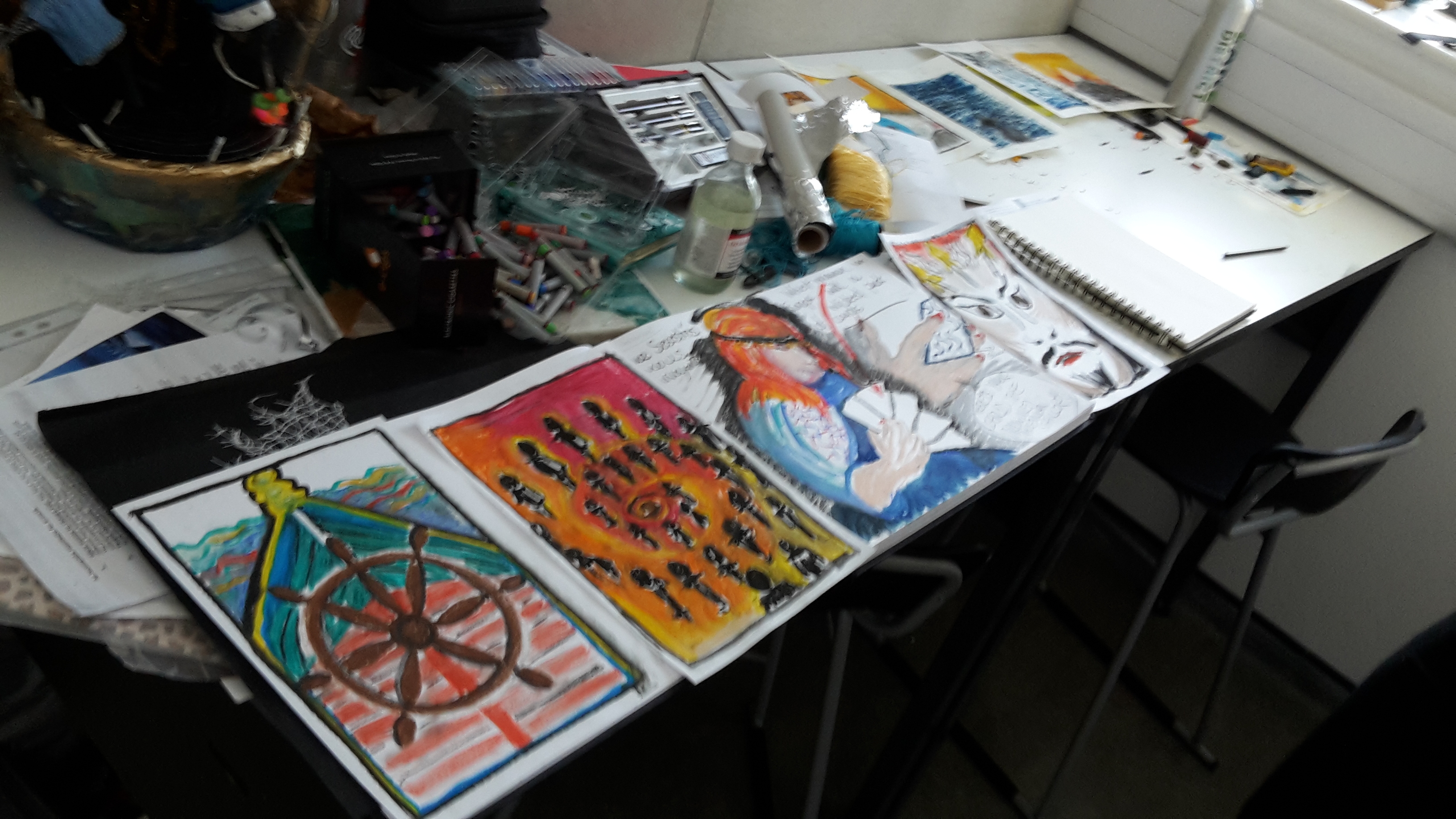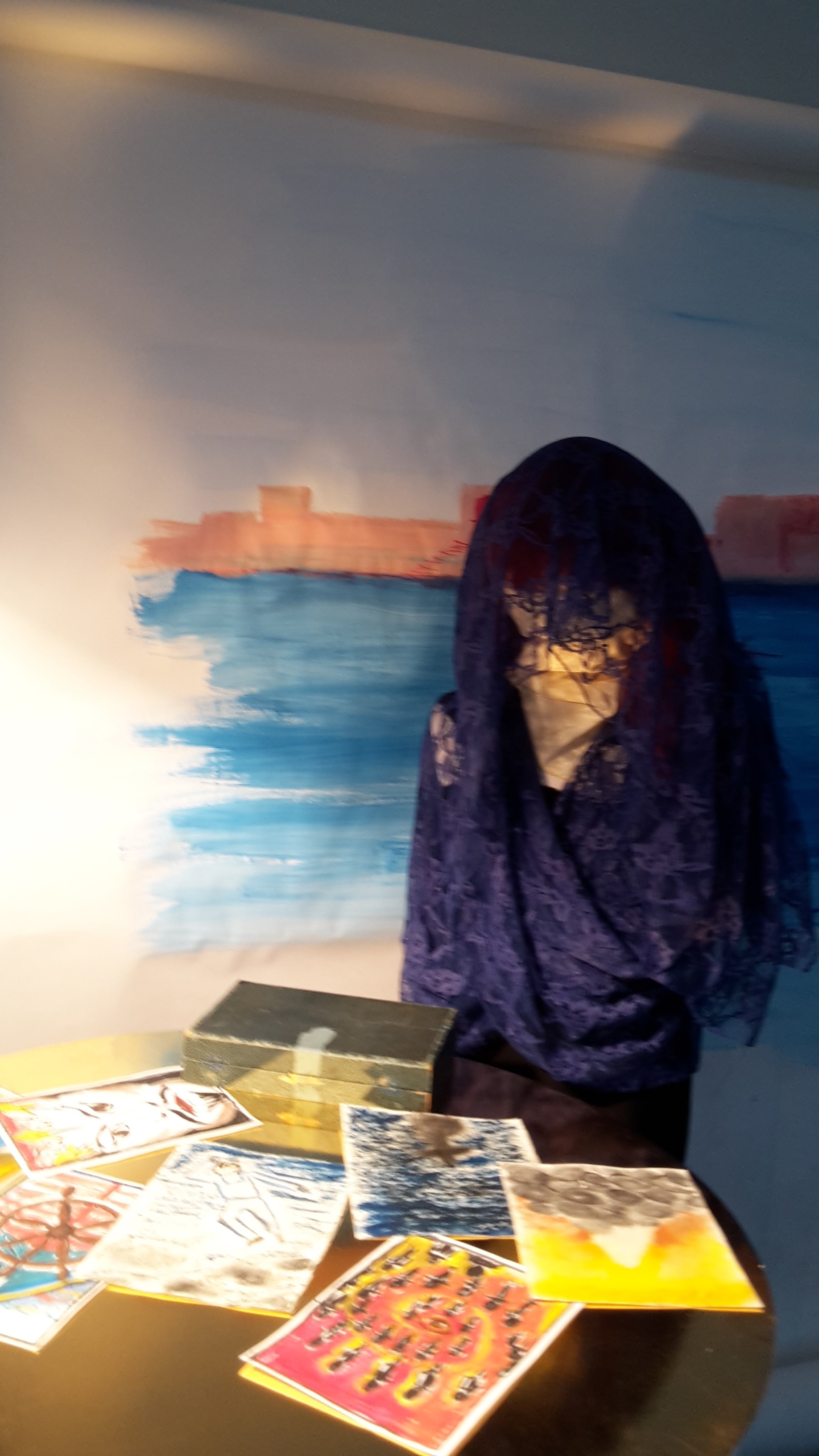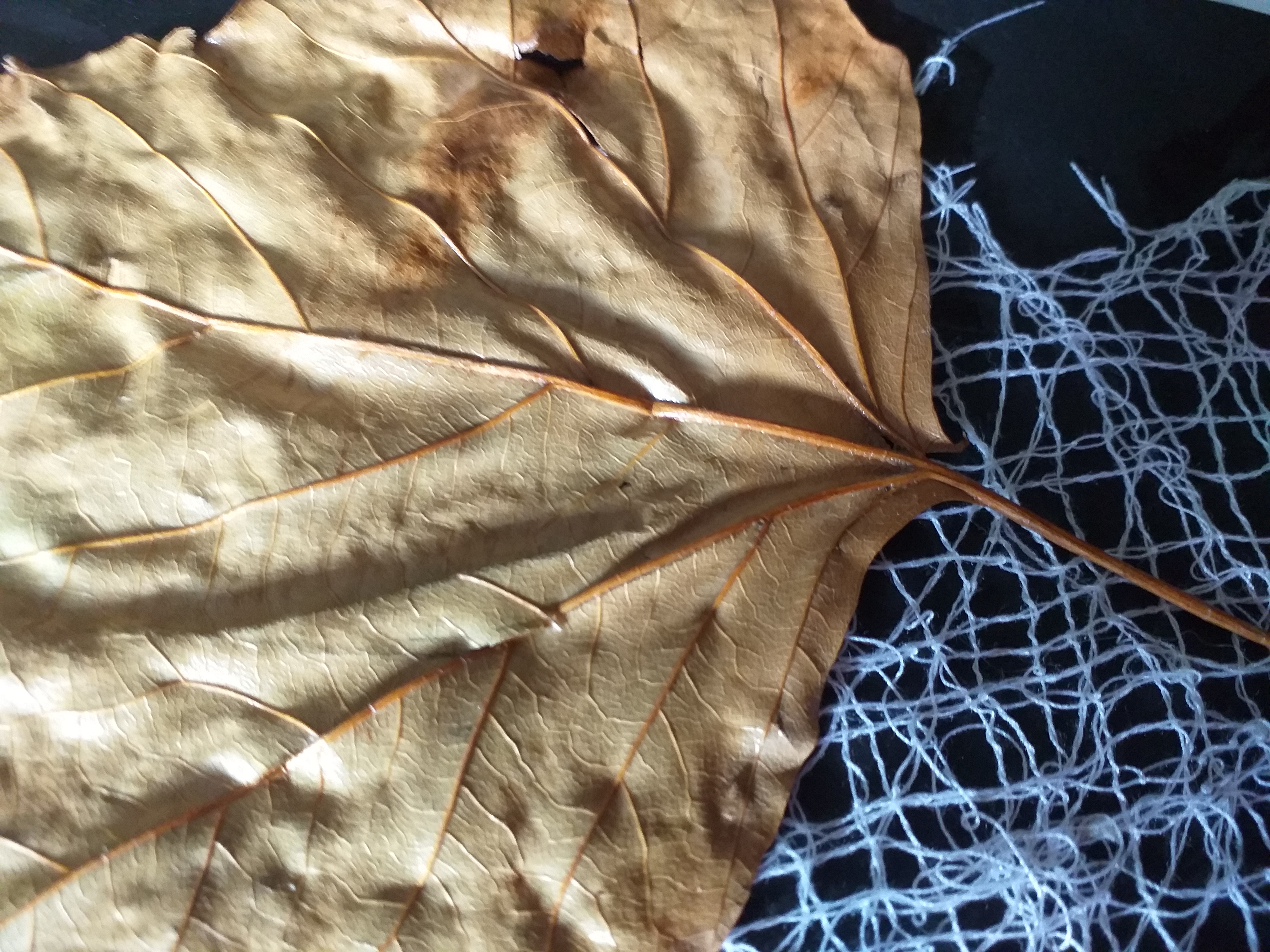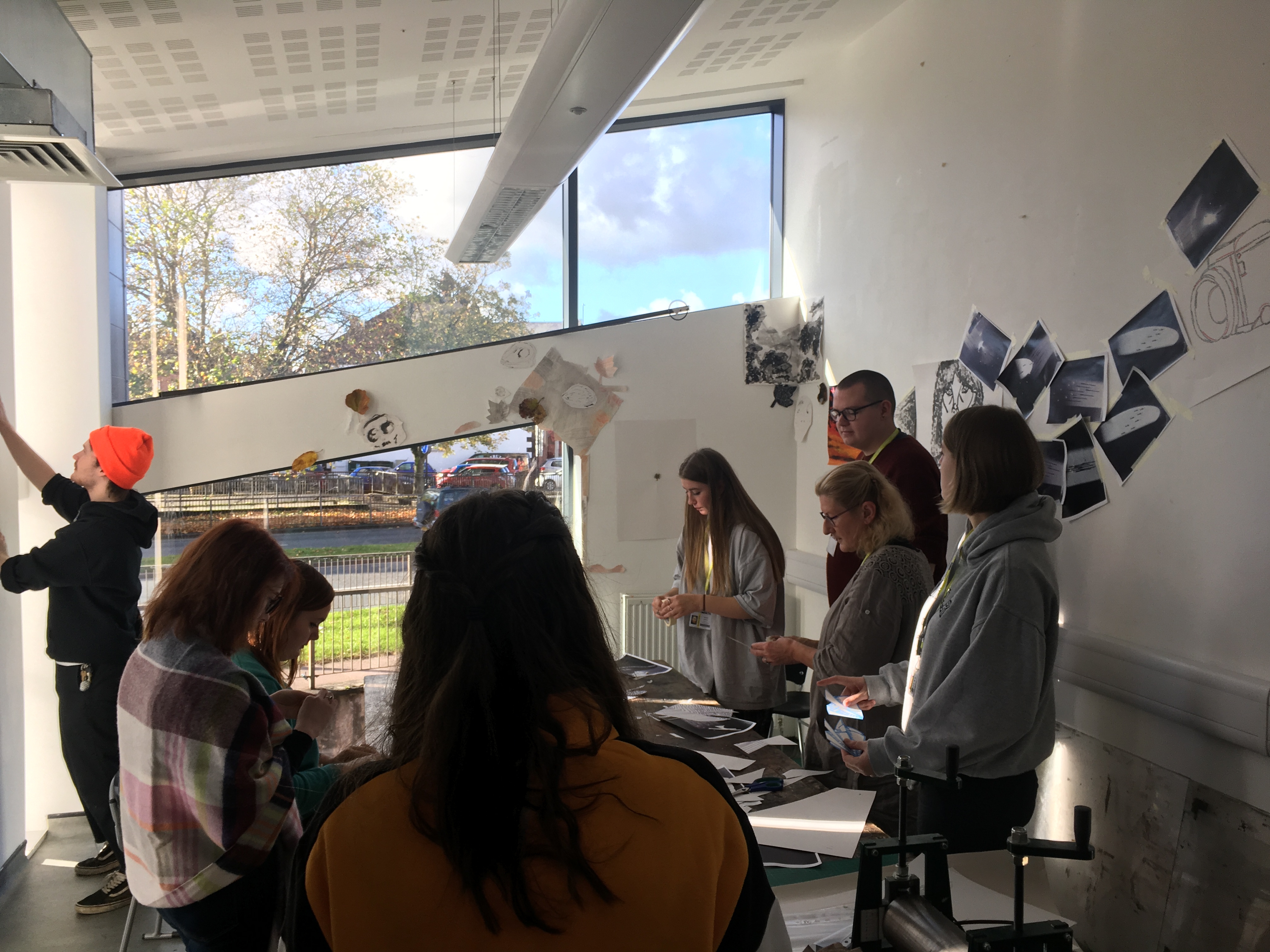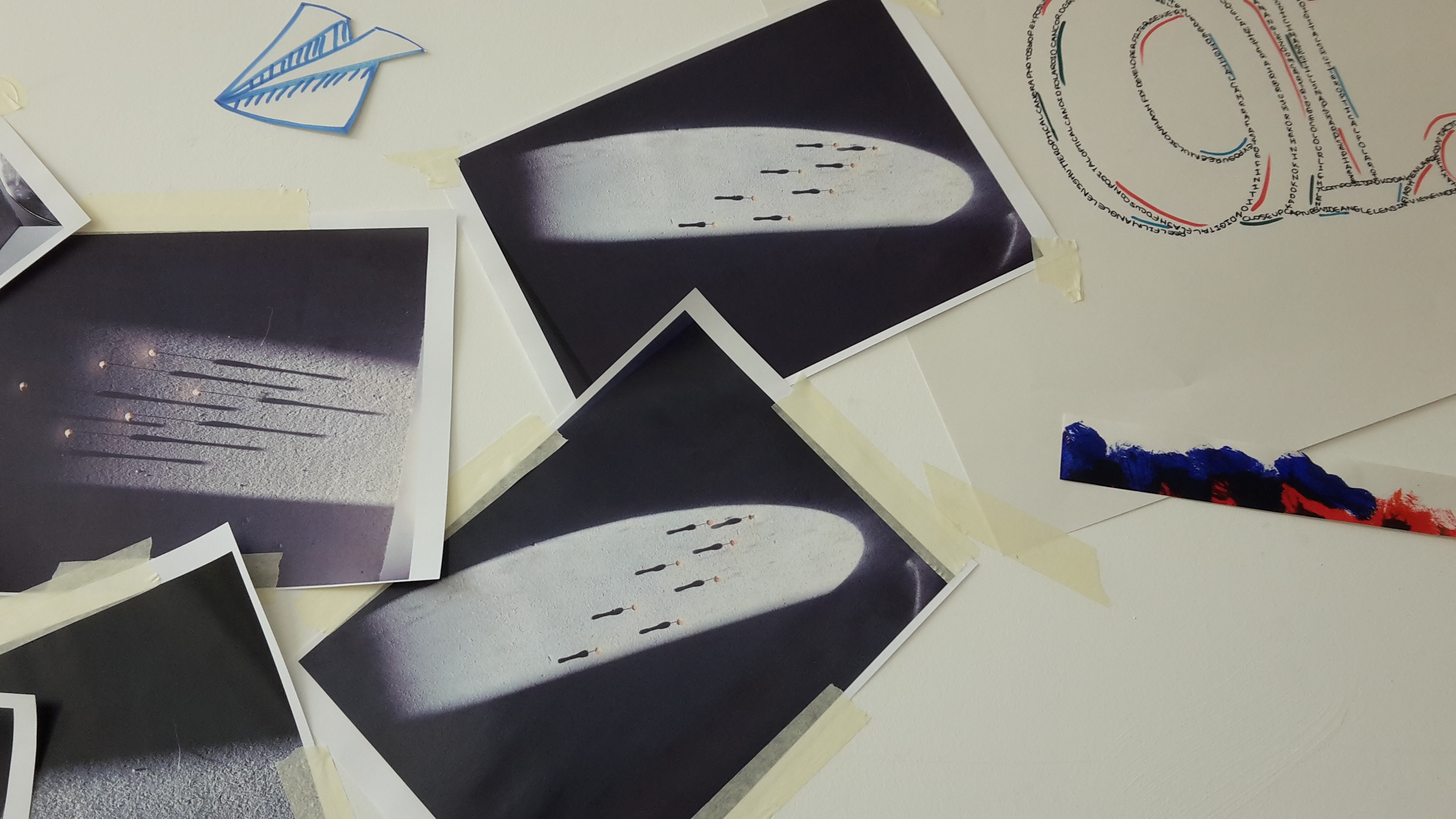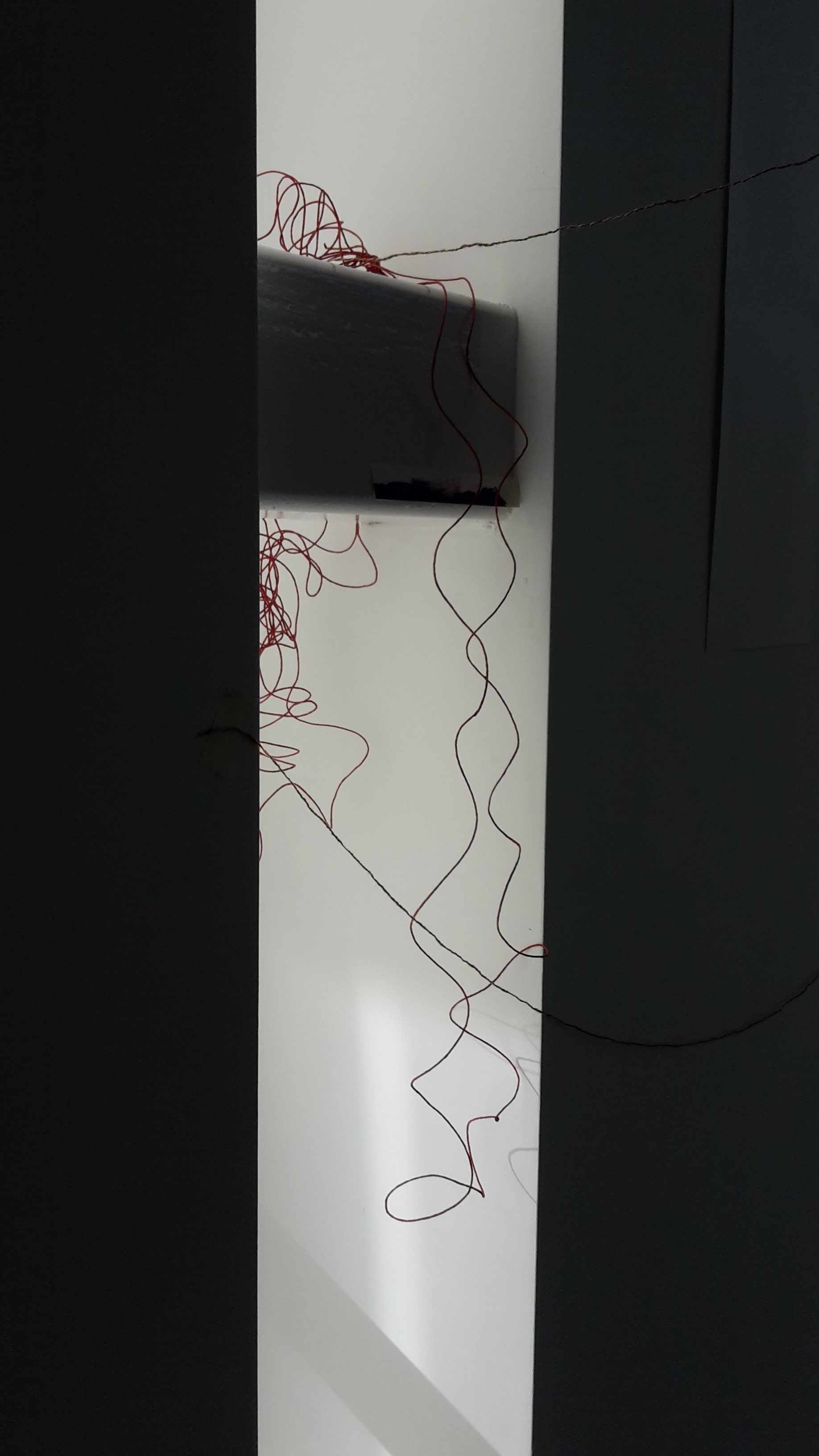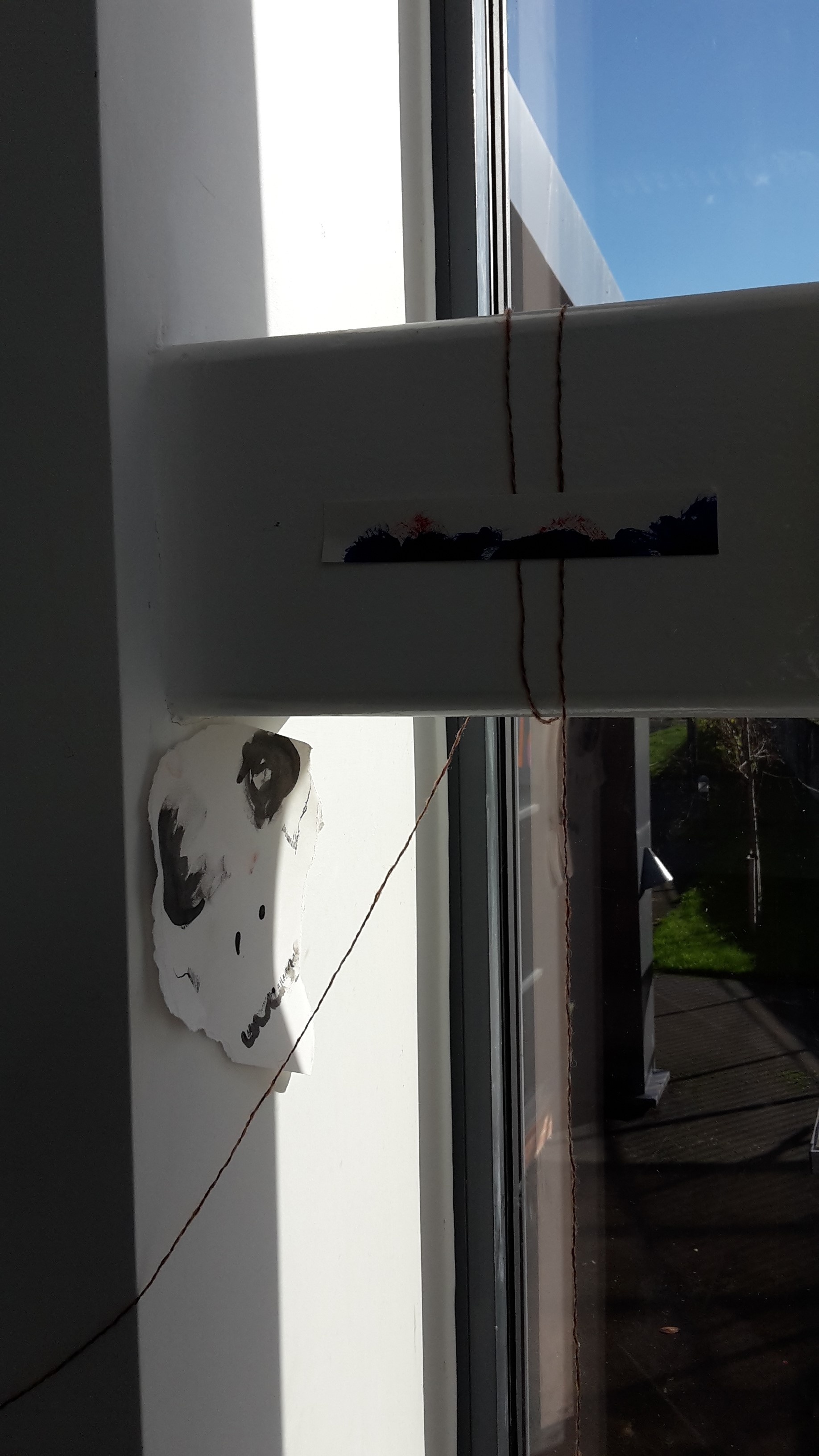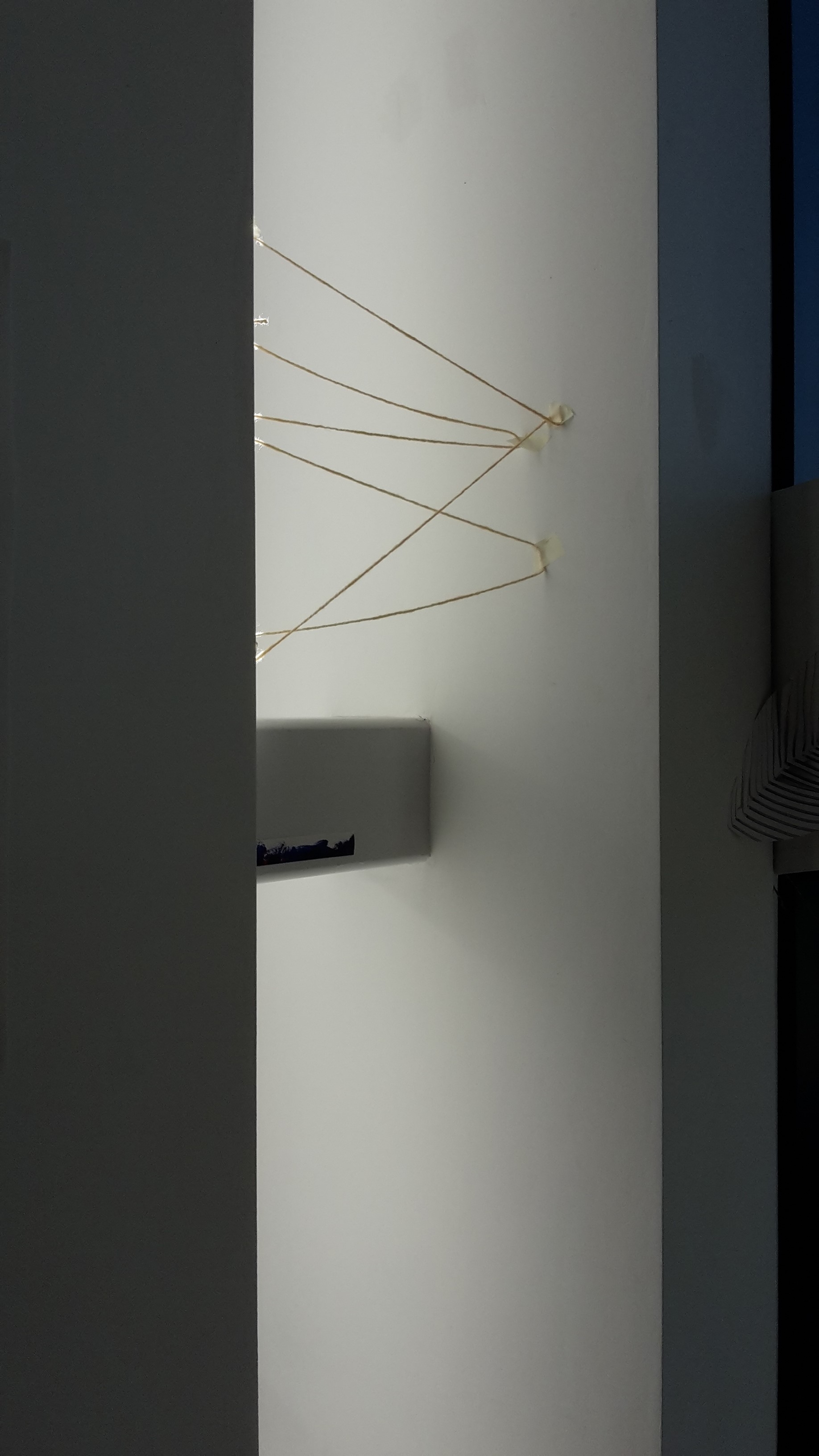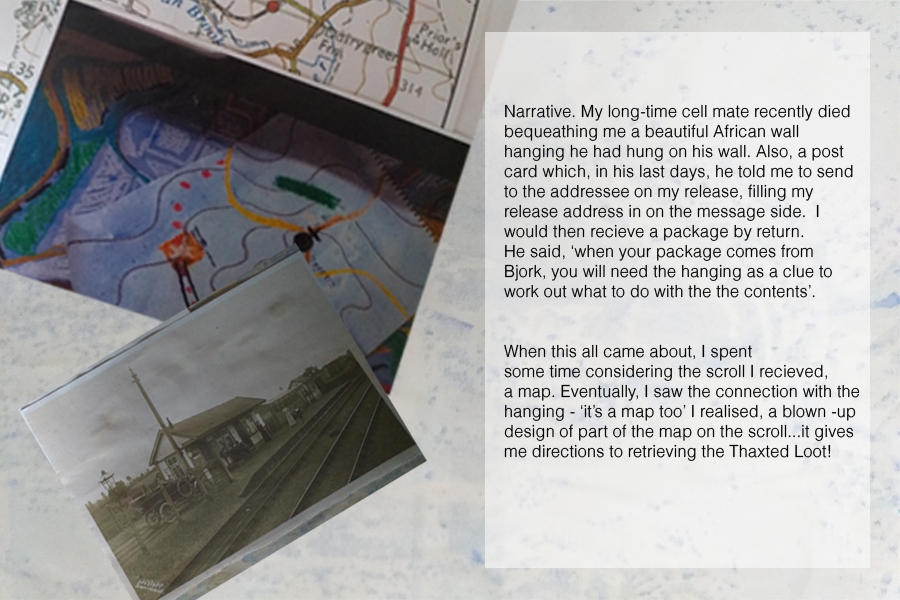I like to make my own sketch books so that I can select a variety of papers – tissue, glassine, sugar paper, cartridge, ingres etc. and other surfaces, like fabric, or whatever I have that is interesting at hand. Varied signatures make it stimulating and challenging to record ideas and experiments on different surfaces and colours – it forces different media choices throughout the chronology of my ideas developing and It seems apt to mention this here because the whole project is based upon chance and unexpected routes having to be taken. However, at this stage, there is no chronology… just a whirl of ideas about selecting the topic ‘mind’ and having to work on it with ‘plant life or nature’ within the methodology of ‘image manipulation/ collage, animation or film’. I think sketchbook making helps as a ‘making activity’ to be doing while I get my thoughts in some sort of order.
While assembling the book, I have been reflecting upon how happy I am to have rolled ‘mind’. I imagine that it will be a productive topic for me because I can approach it from a variety of perspectives that relate to things I have studied in the past.
PSYCHOLOGY: My teacher training involved a lot of psychology and in role, professional development around learning styles and special educational needs, was deeply rooted in psychology too – so, I may find inspiration relating to interpretations of ‘mind’ in this field….. perhaps image manipulation around changing states of mind?
PHILOSOPHY: Years ago, I read philosophy. Epistemology fascinated me and of course, arguments about the mind-body distinction. More recently, while teaching Philosophy of Mind for A’Level Philosophy/R.E. I read-up a lot about qualia and there could be some interesting mileage around the sort of ‘does red cause redness’ type of ‘qualia question’ …. particularly in terms of image manipulation based around colour and form…….
PLANT LIFE / NATURE: This interests me as a gardener and a lover of nature and landscape – subjects I always enjoy photographing and painting …. I could find some initial source material here…… nature and mindfulness – fractal animations? It came to mind too, that I have some primary research examples relating to this in my teaching resources from a few years ago … AQA question preparation PowerPoint if I recall …. Anya Gallacio, Archimboldo, Sam Taylor Johnson, …. things like that. I’ll look them out while the glue is drying in the spine of my sketchbook.

